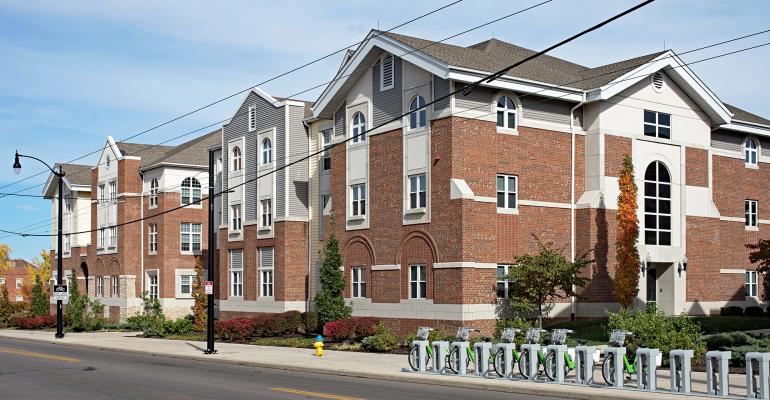Investors continue to be willing to pay up for student housing assets. “Capitalization rates have continued to compress,” says Jaclyn Fitts, director of student housing for CBRE Capital Markets in the firm’s Dallas offices.
Investors spent a record amount of money to buy student housing properties in 2018, pausing only briefly towards the end of the year as interest rates rose. Now interest rates have fallen again, and investors are rushing to close more deals, keeping cap rates at record lows.
“The Fed signaling minor, if any, interest rate hikes this year has helped with buyer confidence,” say Sean J. Baird, director of the national student housing group at real estate services firm Colliers International based in the firm's Tampa, Fla. Office.
2018 breaks record
Investors spent more than $10 billion to buy student housing properties in 2018, making last year the biggest ever for student housing property sales, according to data from research firm Real Capital Analytics (RCA). That was inflated by one giant transaction—Greystar’s $4.6 billion purchase of the REIT EdR from its shareholders.
However, the pace of property sales slowed in the last months of 2018 as interest rates rose. The yield on 10-year Treasury bonds swelled more than 30 basis point to reach 3.2 percent in September and again in November.
“Ignoring the EdR sale, transaction volume at the end of the year was lower than it should have been... It's usually the biggest time of the year,” says Baird. “The large interest rate hike froze capital for a few months at the end of the year, slowing transaction volume.”
Since then, interest rates have come back down as Federal Reserve officials switched course and signaled they are likely to put off further rate hikes until the end of 2019. The benchmark yield on 10-year Treasury bonds was just 2.4 percent on March 25, 2019. That’s the lowest the yield has been since January 2018.
“The fall in interest rates will spur on investment velocity,” says Fitts.
Cap rates continue to fall
Investors continue to pay top prices for student housing relative to the income from the properties. Cap rates averaged 5.56 percent at the end of 2018, according to CBRE. That’s down from 6.5 percent in 2014.
Those cap rates are very close to the cap rates in the apartment sector. “The spread has narrowed between garden apartments and student housing,” says Jim Costello, senior vice president at RCA.
As a result, investors in student housing may not be getting a risk-adjusted return that fully recognizes the extra risks that come with ownership of these properties. “You need a little more cushion for student housing. The capital expenditures are higher, and there are other operational risks. You need a higher cap rate for that.”
Some student housing experts, however, point out that demand for student housing can be even stronger in an economic downturn than conventional demand for apartment rentals because college enrollment tends to rise in tough economic times.
“Student housing yields are still very attractive,” says Baird. “Cap rates are very close to multifamily, but the strength of the asset class going into and during a downturn gives it a leg up on multifamily for long term investors.”
Investors find value-added opportunities
Property buyers can also achieve higher yields by purchasing and renovating older properties further away from campus. These properties can rent for up to $400 per bed less than newer properties that are within walking distance to campus, according to Fitts. That leaves a lot of room for a value-add strategy.
"Approximately 48 percent (364,000 beds) of total industry supply (759,000 beds) was constructed between 1995 and 2009—particularly optimal vintage properties for an acquisition-rehab strategy," says Frederick W. Pierce, IV, president and CEO of Pierce Education Properties, an investor, developer and manager of student housing assets.




